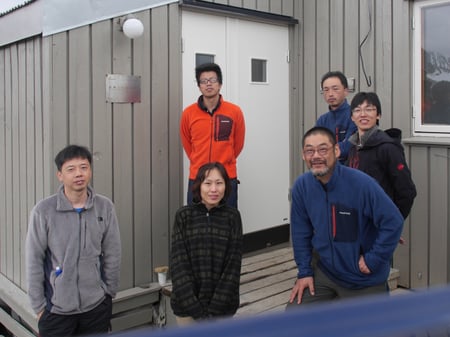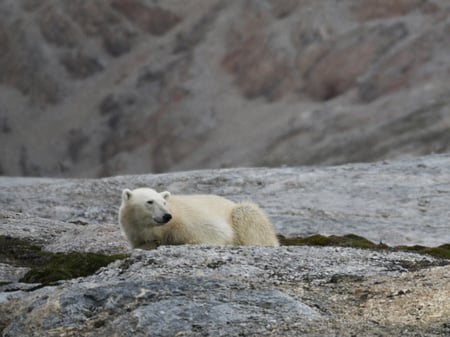Now, I am in Netherland, Dr. Maarten J.J.E. Loonen's Laboratory at University of Groningen for nine months. This summer I stayed in Spitsbergen Island, Norway, with Dr. Loonen and the member of his team for two months.
The latitude of the research base in Ny-ålesund was 78.9°, just around 1,300 km away from the north-pole. However, there were fantastic ecosystems and beautiful landscapes. I could see some polar bears, blue whales, walruses, a huge number of migratory birds and many other animals and plants during this stay. I walked on the glacier, kayaked among huge pieces of sea ice, climbed up snowy mountains, swam in the Greenland Sea, visited some archaeological sites, hiked under the midnight sun, stayed in the old cabins, and collected data and samples for my research.
The title of my main project in Spitsbergen Island was "Can snails fly in the sky?". It looks ridiculous, but is very reasonable given that snails migrate with birds, because some species of snails can survive the passage through a bird’s digestive system. However, it is unclear whether they can migrate over a long distance with birds or not, so I am now trying to test this hypothesis. The geographically special property of Spitsbergen Island provides wonderful opportunity to test my hypothesis, because Spitsbergen Island was totally covered with glacier during the last glacier period (from 70,000 to 10,000 years ago). Thus, almost all organisms on Spitsbergen Island migrated after the last glacial period. A 10,000 year-period is too short to accumulate mutations on DNA sequences; the organisms on Spitsbergen Island should have very similar DNA sequence to the original populations. That means it is possible to define the original populations of organisms on Spitsbergen Island with the comparison of DNA sequences between the populations on Spitsbergen Island and those on wintering grounds for migratory birds. In this trip, I could find some well-preserved snail shells in the common eider's feces for the first time, and collect hundreds of feces for my research. I will identify the species of shells in these feces samples and analyse their DNAs. These could lend important results to test my hypothesis "snails can fly".
Surprisingly, I could accomplish two other projects during this stay. I think this was almost a miracle, because I know from my experience that it is quite hard to do enough fieldwork in a foreign and unfamiliar land, especially for the first time. Therefore, this was a very productive and lucky season for me. Now I just collected samples for several projects, and got the seeds for my new researches. I am really looking forward to analyzing these data and samples during my stay in Netherlands for the next four months. More information and articles about my research and stay in Spitsbergen Island can be found in the following webpages. If you are interested in my research, please contact me (Yuta Morii Website).
The Netherlands Arctic Station
Yuta MORII(Hokkaido University)






